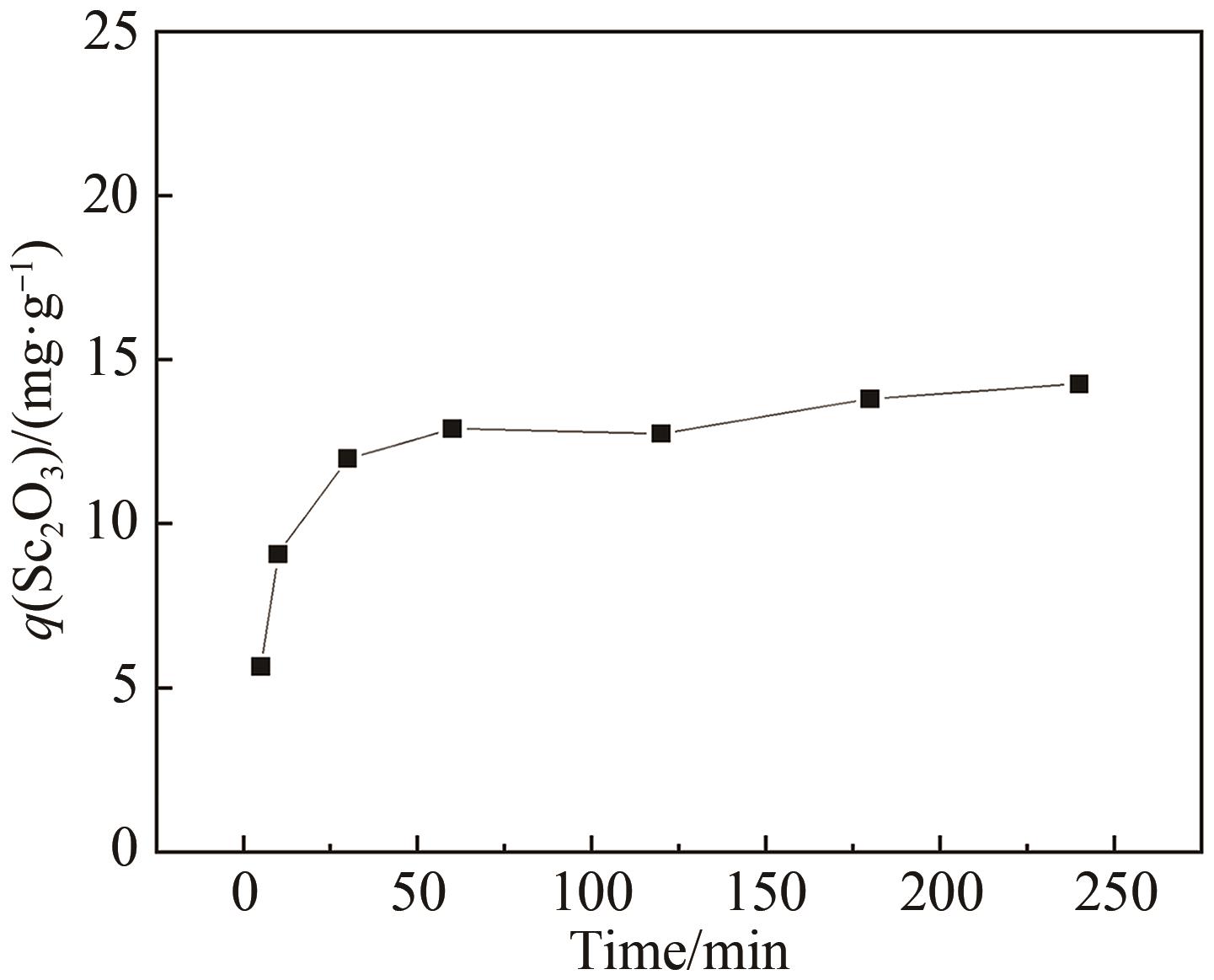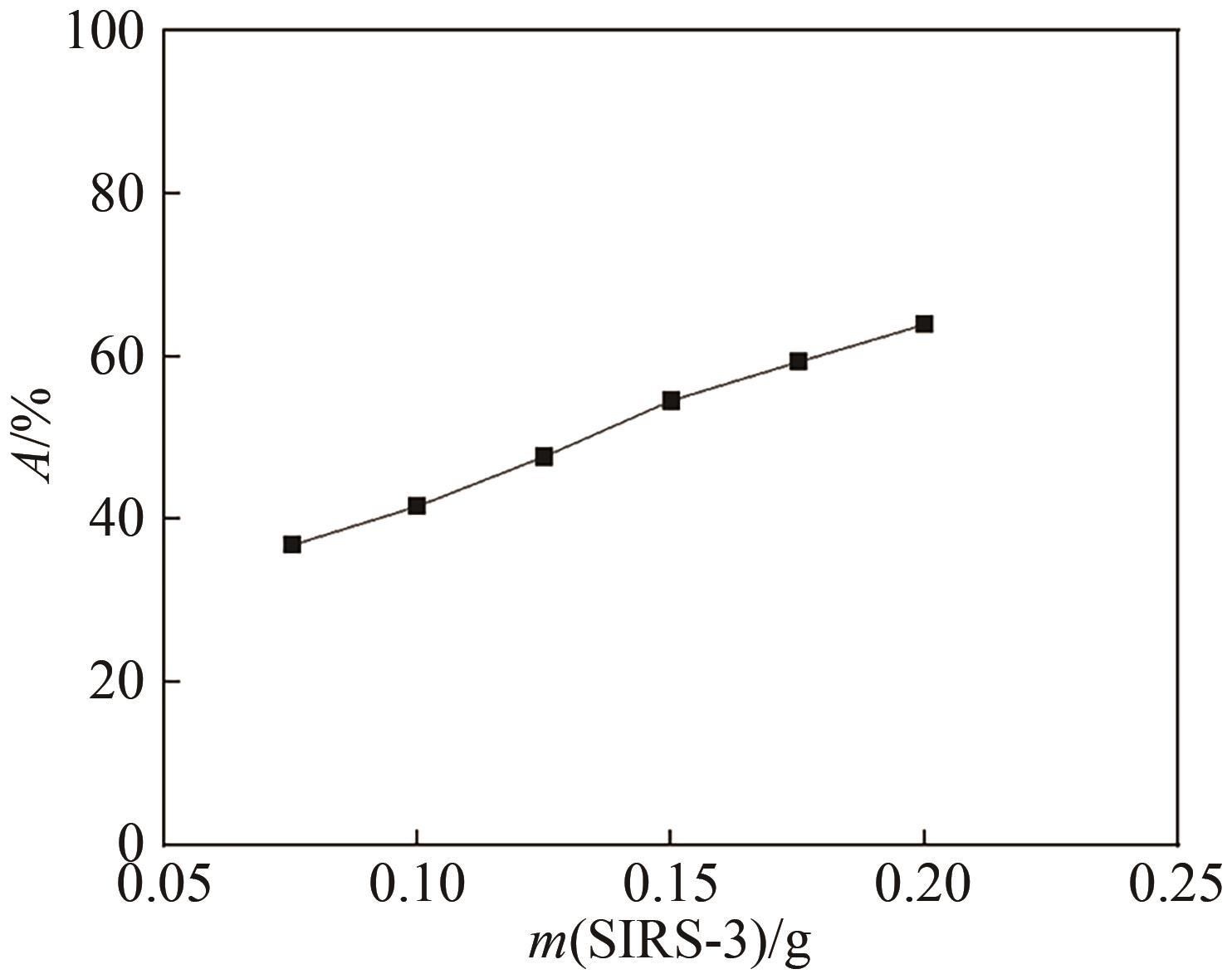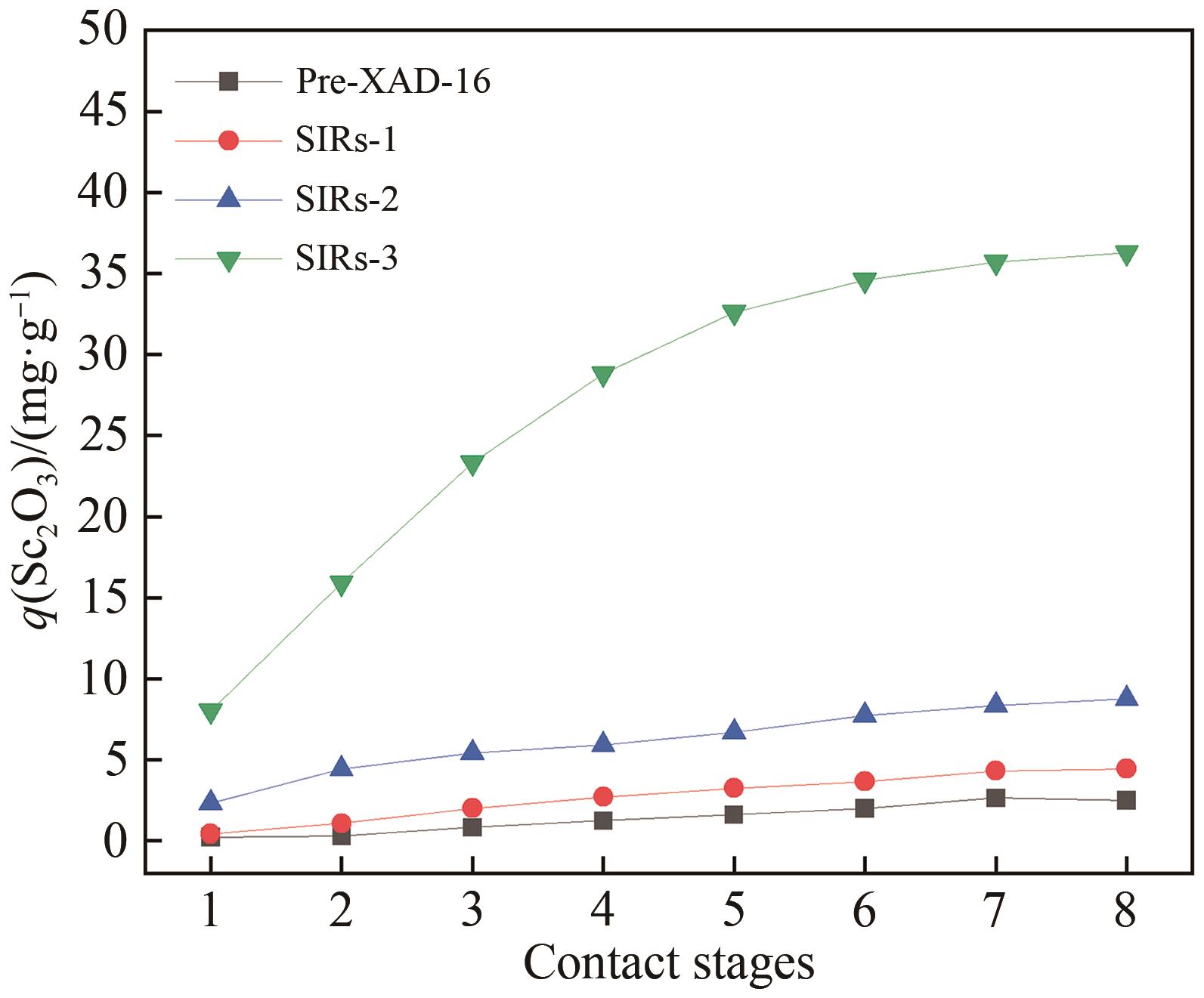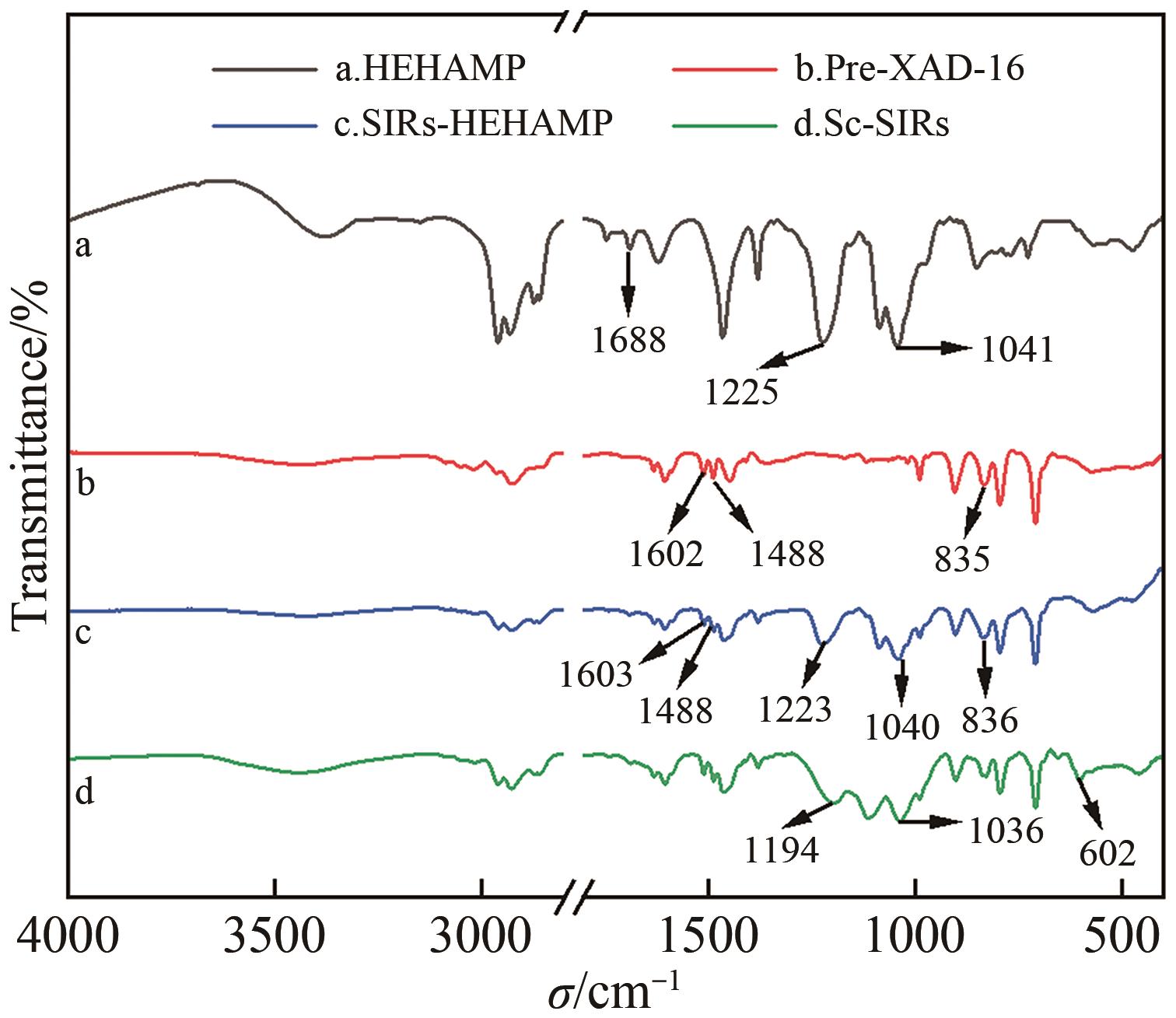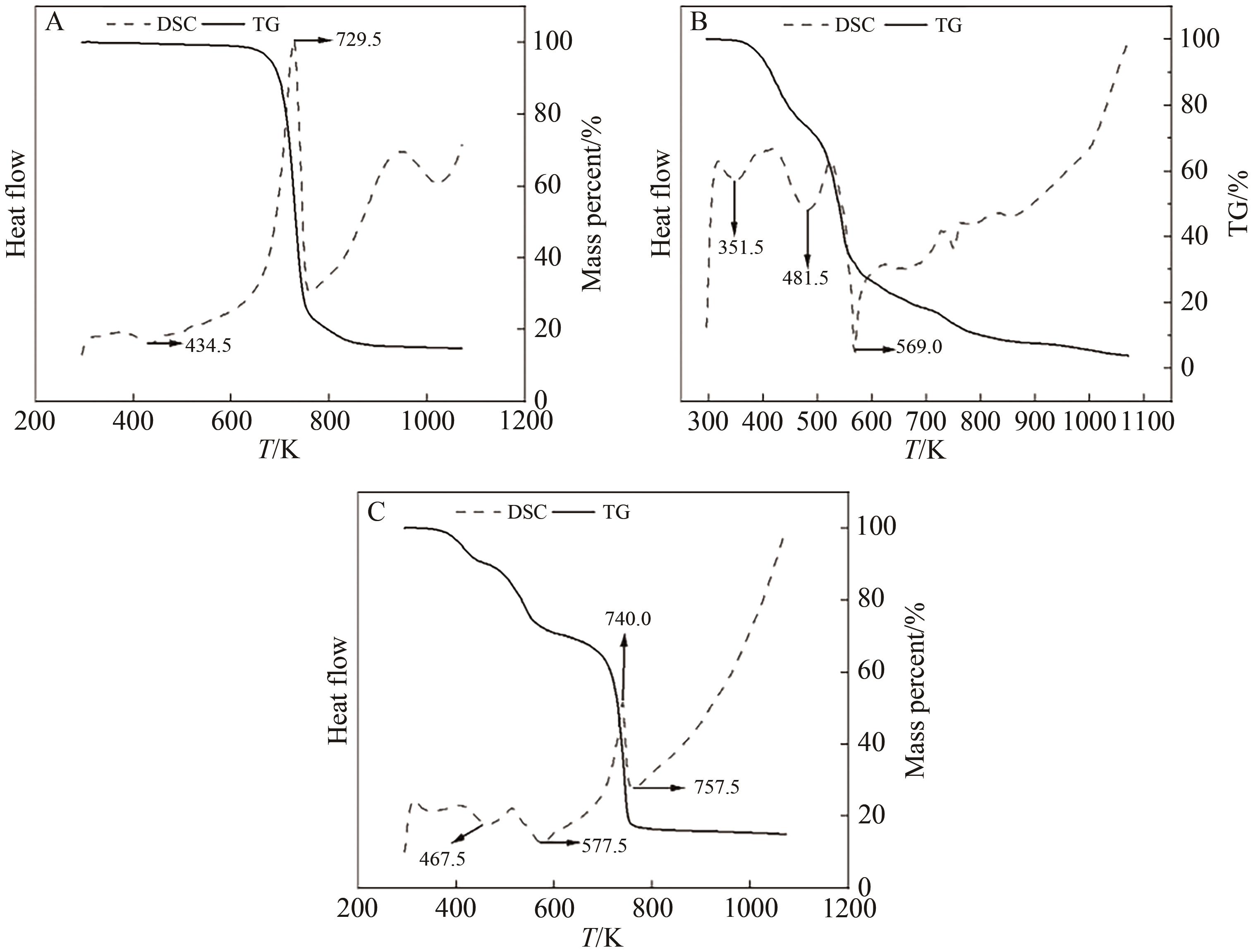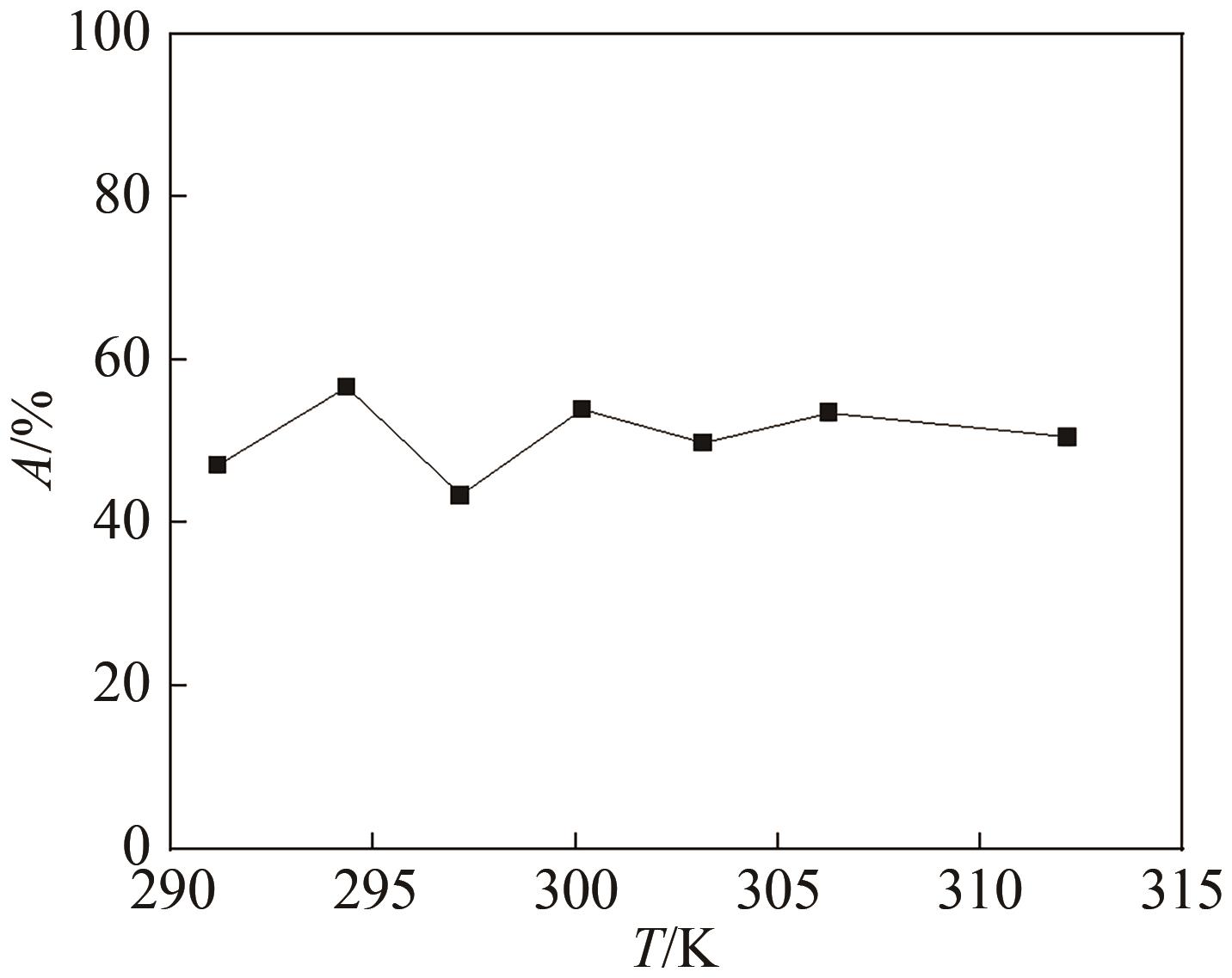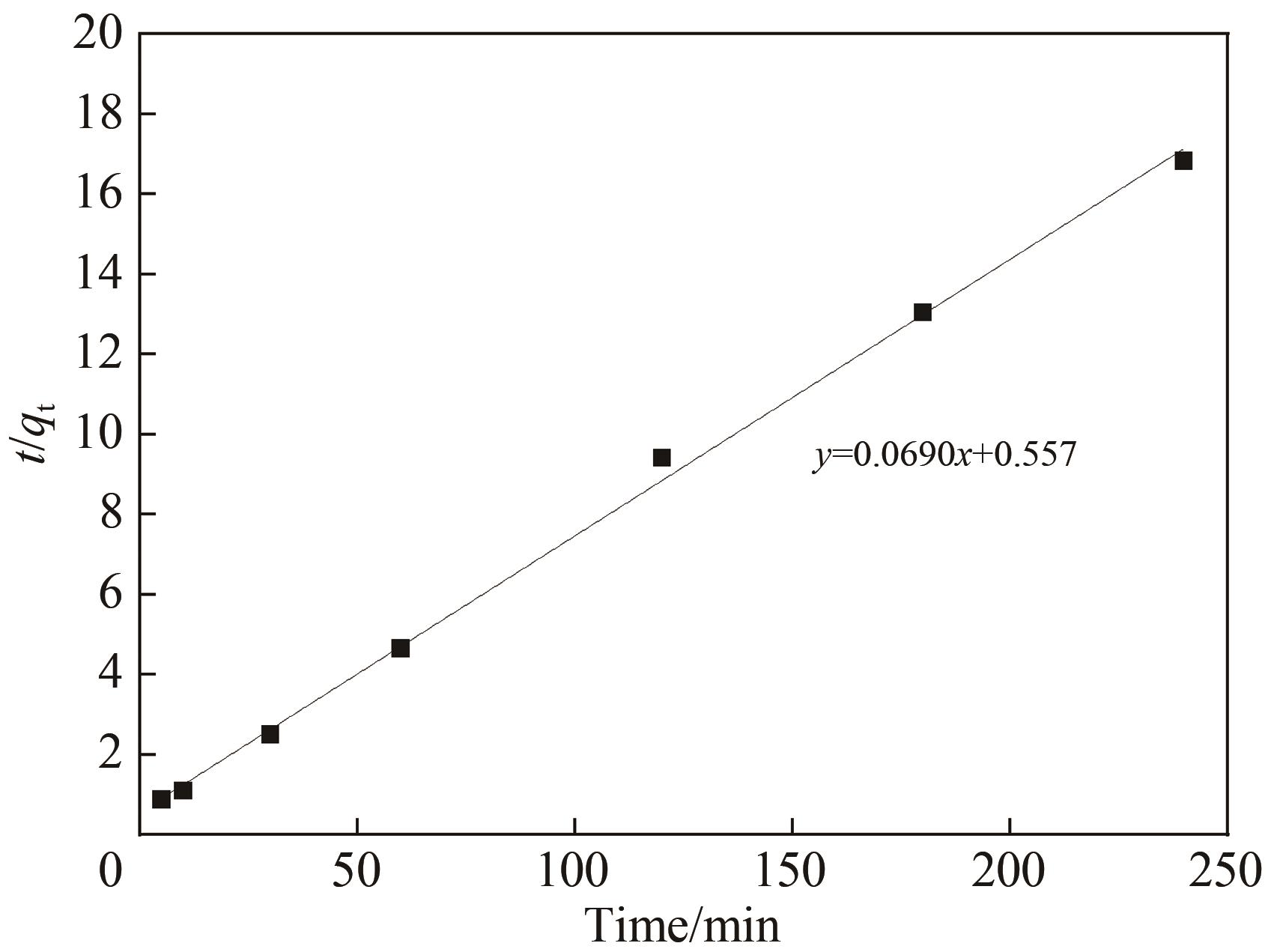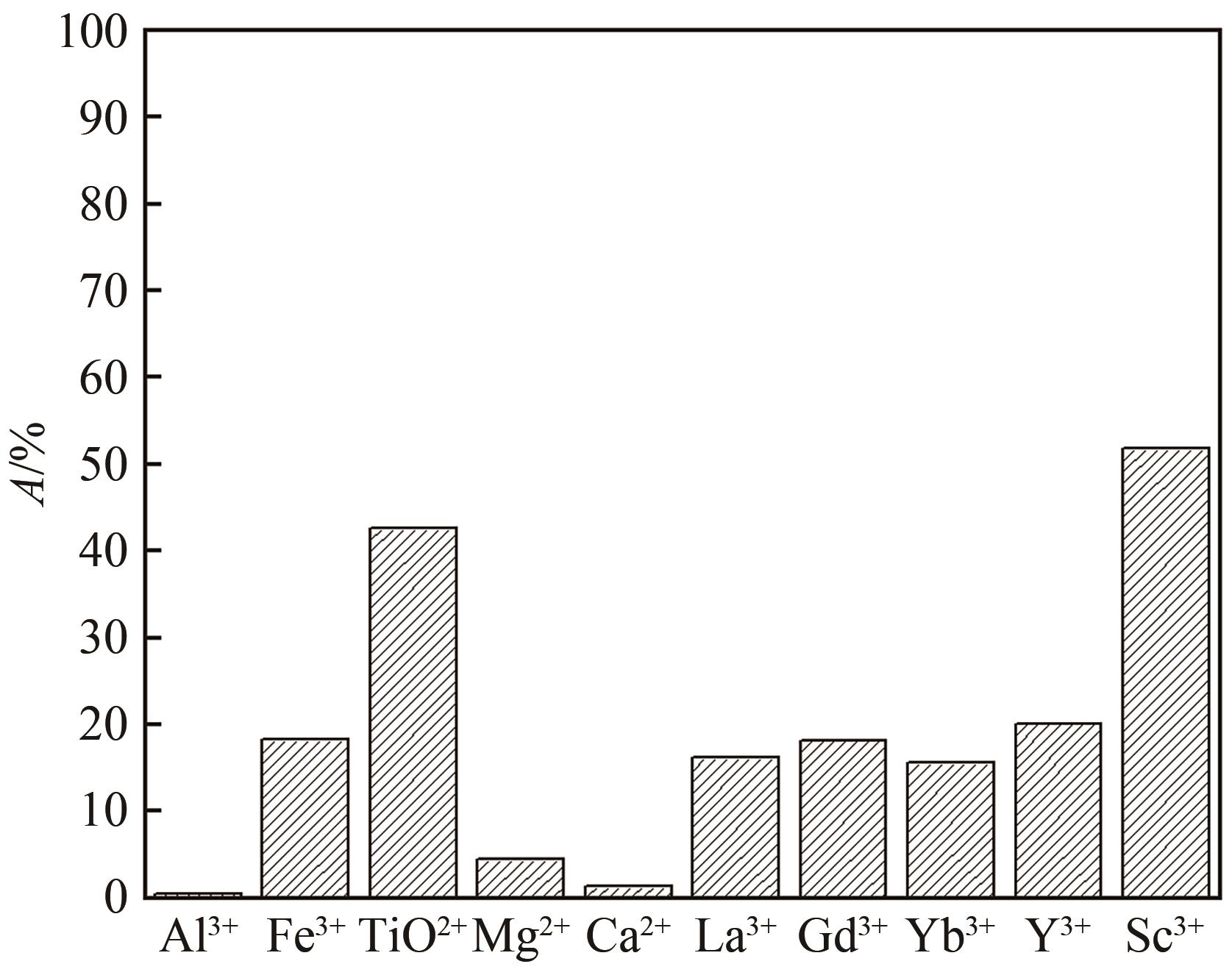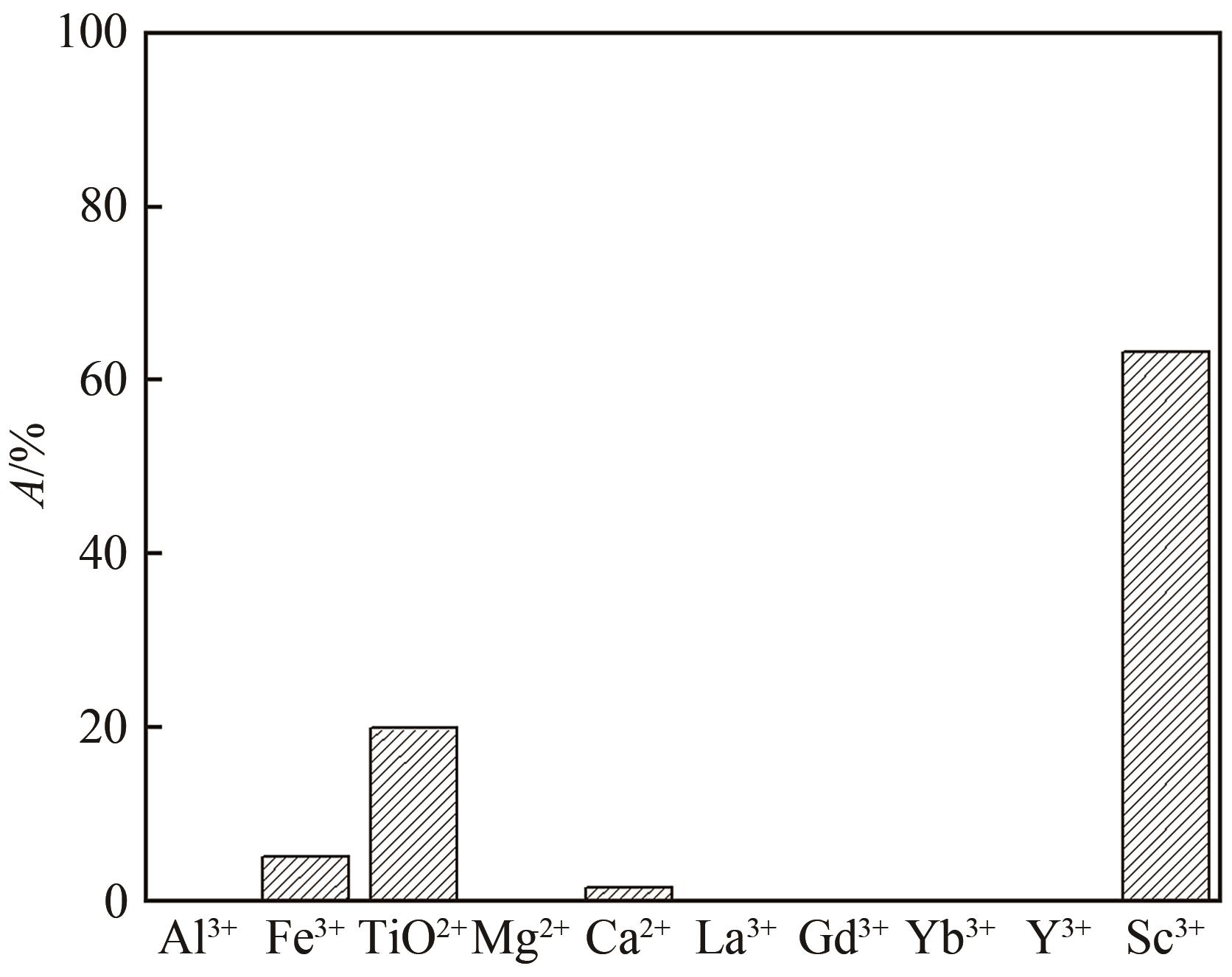
Chinese Journal of Applied Chemistry ›› 2025, Vol. 42 ›› Issue (1): 95-106.DOI: 10.19894/j.issn.1000-0518.240262
• Full Papers • Previous Articles Next Articles
Selective Adsorption of Scandium by (2-Ethylhexylamino) Methyl Phosphonic Acid Mono-2-Ethylhexyl Ester Impregnated Resin and Its Application
Jian-Feng YANG1,2, Yan-Ling LI1( ), Jing-Lu HAN1,2, Song-Song LI1,2, Wu-Ping LIAO1,2,3(
), Jing-Lu HAN1,2, Song-Song LI1,2, Wu-Ping LIAO1,2,3( )
)
- 1.State Key Laboratory of Rare Earth Resource Utilization,Changchun Institute of Applied Chemistry,Chinese Academy of Sciences,Changchun 130022,China
2.School of Applied Chemistry and Engineering,University of Science and Technology of China,Hefei 230026,China
3.Ganjiang Innovation Academy,Chinese Academy of Sciences,Ganzhou 341000,China
-
Received:2024-08-13Accepted:2024-12-19Published:2025-01-01Online:2025-01-24 -
Contact:Yan-Ling LI,Wu-Ping LIAO -
About author:wpliao@ciac.ac.cn;
liyanling@ciac.ac.cn
-
Supported by:the National Natural Science Foundation of China(92262301)
CLC Number:
Cite this article
Jian-Feng YANG, Yan-Ling LI, Jing-Lu HAN, Song-Song LI, Wu-Ping LIAO. Selective Adsorption of Scandium by (2-Ethylhexylamino) Methyl Phosphonic Acid Mono-2-Ethylhexyl Ester Impregnated Resin and Its Application[J]. Chinese Journal of Applied Chemistry, 2025, 42(1): 95-106.
share this article
Add to citation manager EndNote|Ris|BibTeX
URL: http://yyhx.ciac.jl.cn/EN/10.19894/j.issn.1000-0518.240262
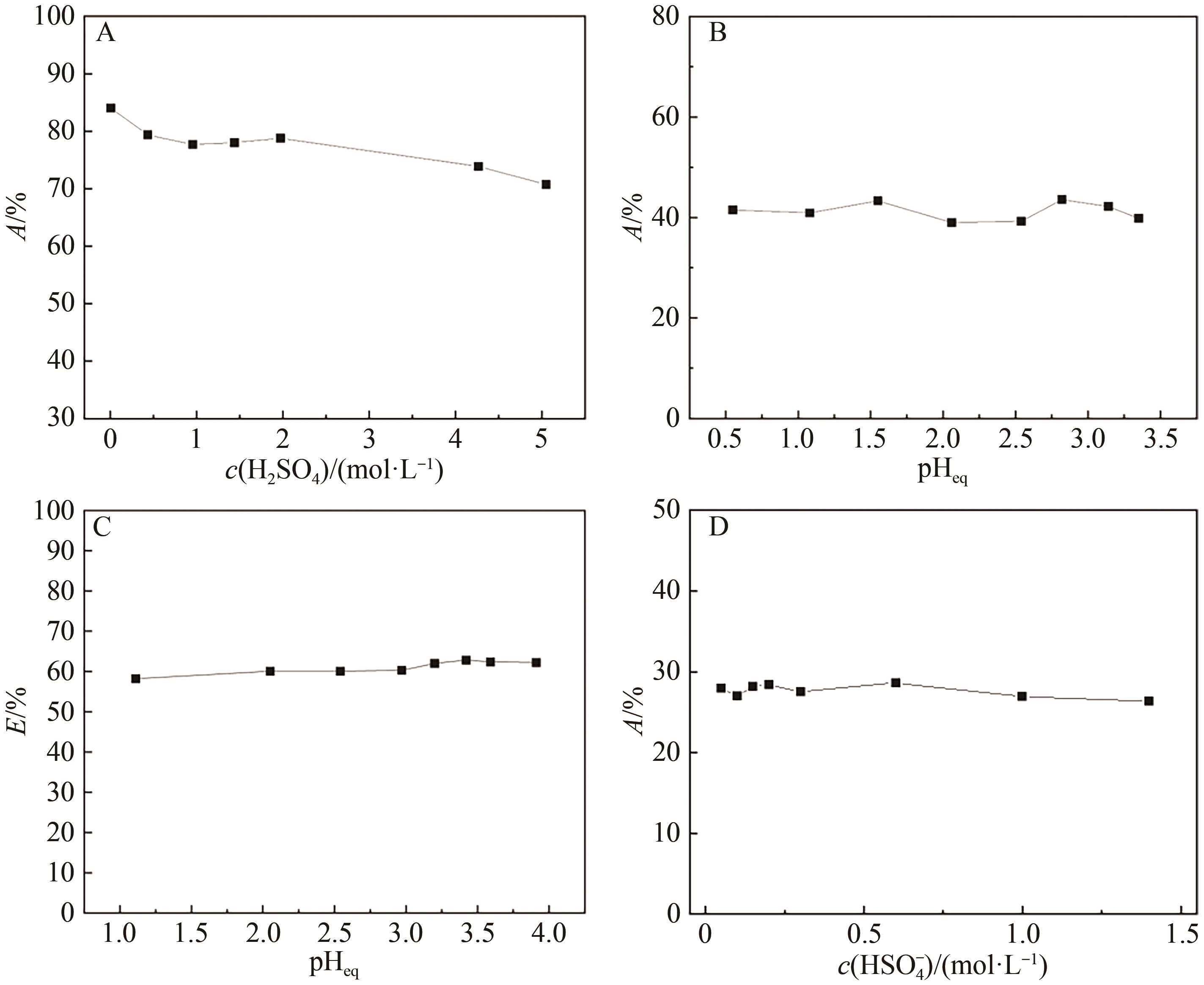
Fig.2 Effect of the solution acidity of the solution on the Sc3+ adsorption ((A) high acidity and (B) low acidity); (C) Effect of the aqueous acidity on the extraction of Sc3+; (D) Effect of HSO4- concentration on the Sc3+ adsorption
| Impregnated resins | Extractant | Extractant loading/(mmol·g-1) | Adsorption capacity a /(mg·g-1) | Acidity/(mol·L-1 H2SO4) | Equilibrium time/min | Ref. |
|---|---|---|---|---|---|---|
| TP-272 | Cyanex272 | - | 17.01 | pH=2.5 | 720 | [ |
| TRPO/SiO2-P | Cyanex923 | 0.89 | 20.40 | 5 | 120 | [ |
| HDEHP/SiO2-P | P204 | 0.803 | 21.55 | 5 | 5 | [ |
| SIRs-HEHAMP | HEHAMP | 0.72 | 36.29 | 0.44 | 60 | This work |
Table 1 Adsorption property of different impregnated resin for Sc3+ in sulfuric acid medium
| Impregnated resins | Extractant | Extractant loading/(mmol·g-1) | Adsorption capacity a /(mg·g-1) | Acidity/(mol·L-1 H2SO4) | Equilibrium time/min | Ref. |
|---|---|---|---|---|---|---|
| TP-272 | Cyanex272 | - | 17.01 | pH=2.5 | 720 | [ |
| TRPO/SiO2-P | Cyanex923 | 0.89 | 20.40 | 5 | 120 | [ |
| HDEHP/SiO2-P | P204 | 0.803 | 21.55 | 5 | 5 | [ |
| SIRs-HEHAMP | HEHAMP | 0.72 | 36.29 | 0.44 | 60 | This work |
| Pseudo-first-order model parameters | Pseudo-second-order model parameters | ||||
|---|---|---|---|---|---|
| q(e,cal)/(mg·g-1) | k1/min-1 | R2 | q(e,cal)/(mg·g-1) | k2/(g·mg-1·min-1) | R2 |
| 5.366 | 73.52 | 0.825 | 14.49 | 2.653×10-3 | 0.998 |
Table 2 Kinetic parameters of the pseudo-first-order kinetic equation and the pseudo-second-order kinetic equation for adsorption of Sc3+ by SIRs-HEHAMP impregnated resin
| Pseudo-first-order model parameters | Pseudo-second-order model parameters | ||||
|---|---|---|---|---|---|
| q(e,cal)/(mg·g-1) | k1/min-1 | R2 | q(e,cal)/(mg·g-1) | k2/(g·mg-1·min-1) | R2 |
| 5.366 | 73.52 | 0.825 | 14.49 | 2.653×10-3 | 0.998 |
| 1 | 林河成. 金属钪的应用与市场[J]. 世界有色金属, 2012(11): 58-59. |
| LIN H C. Application and market of scandium[J]. World Nonferrous Met, 2012(11): 58-59. | |
| 2 | 王祝堂. 铝-钪合金的性能与应用[J]. 铝加工, 2012(3): 4-14. |
| WANG Z T. Property and application of Al-Sc alloy[J]. Aluminium Fabrication, 2012(3): 4-14. | |
| 3 | 柏振海, 罗兵辉, 谭敦强. Al-Mg-(Sc)合金退火组织和性能[J]. 中南工业大学学报(自然科学版), 2002(6): 600-603. |
| BAI Z H, LUO B H, TAN D Q. Tempering on the microstructure and properties of Al-Mg-(Sc) alloy[J]. J Central South Univ (Nat Sci Ed), 2002(6): 600-603. | |
| 4 | LU J H, LI S S, TAO S W, et al. Efficient CO2 electrolysis with scandium doped titanate cathode[J]. Int J Hydrogen Energy, 2017, 42: 8197-8206. |
| 5 | 熊瑞, 周正东, 郭诗琪, 等. 稀土钪元素在发酵工业中的应用[J]. 食品与发酵科技, 2017, 53(4): 92-93. |
| XIONG R, ZHOU Z D, GUO S Q, et al. Applicability of rare earth element scandium to fermentation industries[J]. Food Fermentation Sci Technol, 2017, 53(4): 92-93. | |
| 6 | PELLISSIER H. Recent developments in enantioselective scandium-catalyzed transformations[J]. Coordination Chem Rev, 2016, 313: 1-37. |
| 7 | WANG W W, PRANOLO Y, CHENG C Y. Metallurgical processes for scandium recovery from various resources: a review[J]. Hydrometallurgy, 2011, 108(1/2): 100-108. |
| 8 | RAMASAMY D L, PUHAKKA V, REPO E, et al. Selective separation of scandium from iron, aluminium and gold rich wastewater using various amino and non-amino functionalized silica gels-a comparative study[J]. J Cleaner Prod, 2018, 170: 890-901. |
| 9 | ONGHENA B, BORRA C R, VAN GERVEN T, et al. Recovery of scandium from sulfation-roasted leachates of bauxite residue by solvent extraction with the ionic liquid betainium bis(trifluoromethylsulfonyl)imide[J]. Sep Purif Technol, 2017, 176: 208-219. |
| 10 | LIU H, LIU H L, NIE C X, et al. Comprehensive treatments of tungsten slags in China: a critical review[J]. J Environ Manage, 2020, 270(110927): 1-12. |
| 11 | LIAO C S, JIA J T, ZHANG Y, et al. Extraction of scandium from ion-adsorptive rare earth deposit by naphthenic acid[J]. J Alloys Compounds, 2001, 323(C): 833-837. |
| 12 | LE W H, KUANG S T, ZHANG Z F, et al. Selective extraction and recovery of scandium from sulfate medium by Cextrant 230[J]. Hydrometallurgy, 2018, 178: 54-59. |
| 13 | PENG X J, LI L, ZHANG M, et al. Preparation of ultra-high pure scandium oxide with crude product from titanium white waste acid[J]. J Rare Earths, 2023, 41: 764-770. |
| 14 | ZHANG W, ZHU H, LIU S F, et al. Scandium recovery from ion-adsorption rare earth concentrate with HEHEHP as extractant[J]. J Central South Univ, 2021, 28: 679-689. |
| 15 | SALMAN A D, JUZSAKOVA T, JALHOOM M G, et al. A selective hydrometallurgical method for scandium recovery from a real red mud leachate: a comparative study[J]. Environ Pollut, 2022, 308(119596): 1-16. |
| 16 | 王俊莲, 孙春宝, 徐盛明. 基于稀土分离的萃淋树脂制备与应用研究[J]. 中国稀土学报, 2015, 33(2): 129-145. |
| WANG J L, SUN C B, XU S M. Advances in preparation and application of solid-liquid extraction resins based on rare earth separation[J]. J Chin Soc Rare Earths, 2015, 33(2): 129-145. | |
| 17 | WANG J L, XIE M Y, MA J, et al. Extractant(2,3-dimethylbutyl)(2,4,4′-trimethylpentyl) phosphinic acid (INET-3) impregnated onto XAD-16 and its extraction and separation performance for heavy rare earths from chloride media[J]. J Rare Earths, 2017, 35(12): 1239-1247. |
| 18 | BAO S X, HAWKER W, VAUGHAN J. Scandium loading on chelating and solvent impregnated resin from sulfate solution[J]. Solvent Extra Ion Exch, 2017, 36: 100-113. |
| 19 | YU Q, NING S Y, ZHANG W, et al. Recovery of scandium from sulfuric acid solution with a macro porous TRPO/SiO2-P adsorbent[J]. Hydrometallurgy, 2018, 181: 74-81. |
| 20 | ADONIS S, OOSTHUYSEN T. Evaluation of scandium sorption using modified Amberlite XAD-4 resin[J]. Monatshefte Für Chem-Chem Monthly, 2022, 153: 1185-1196. |
| 21 | ZHANG R, KHAN S, AZIMI G. Microstructured silicon substrates impregnated with bis(2,4,4-trimethylpentyl) phosphinic acid for selective scandium recovery[J]. Appl Surface Sci, 2023, 622(156852): 1-15. |
| 22 | ZHAO Q, ZHANG Z F, LI Y L, et al. Solvent extraction and separation of rare earths from chloride media using α-aminophsphonic acid extractant HEHAMP[J]. Solvent Extra Ion Exch, 2018, 36(2): 136-149. |
| 23 | CHEN L Y, DENG B C, KUANG S T, et al. Efficient extraction and separation of heavy rare earths from chloride medium with N,N′-di(2-ethylhexyl)aminomethyl phosphonic acid mono-2-ethylhexyl ester[J]. Hydrometallurgy, 2023, 22(106173): 1-9. |
| 24 | ZHANG W, YU S, ZHANG S, et al. Separation of scandium from the other rare earth elements with a novel macro-porous silica-polymer based adsorbent HDEHP/SiO2-P[J]. Hydrometallurgy, 2019, 185: 117-124. |
| 25 | DAMINESCU D, DUTEANU N, CIOPEC M, et al. Adsorption of scandium ions by amberlite XAD7HP polymeric adsorbent loaded with tri-n-octylphosphine oxide[J]. Molecules, 2024, 29(7): 1578. |
| 26 | SUN X Q, JI Y, HU F C, et al. The inner synergistic effect of bifunctional ionic liquid extractant for solvent extraction[J]. Talanta, 2010, 81: 1877-1883. |
| 27 | YIN S H, WU W Y, BIAN X, et al. Effect of complexing agent lactic acid on the extraction and separation of Pr(Ⅲ)/Ce(Ⅲ) with di-(2-ethylhexyl) phosphoric acid[J]. Hydrometallurgy, 2013, 131/132: 133-137. |
| 28 | 刘丰五, 刘玉坤. 氯甲基化苯乙烯-二乙烯基苯共聚体的红外光谱研究[J]. 河南科学, 2001, 19(1): 56-58. |
| LIU F W, LIU Y K. IR spectroscopic study on chloromethylated styrene-divinylbenzene copolymer[J]. Henan Sci, 2001, 19(1): 56-58. | |
| 29 | NASEEM R, TAHIR S S. Removal of Pb(Ⅱ) from aqueous/acidic solutions by using bentonite as an adsorbent[J]. Water Res, 2001, 35: 3982-3986. |
| 30 | 邱森, 刘美玭, 蒋小岗, 等. 离子液浸渍树脂对稀土吸附性能的研究[J]. 稀土, 2019, 40(2): 142-147. |
| QIU S, LIU M P, JIANG X G, et al. The adsorption of lonic liquid impregnated resin for rare earth[J]. Chin Rare Earths, 2019, 40(2): 142-147. | |
| 31 | 王春. 借助手持技术探究外界条件对三价铁离子催化过氧化氢分解的影响[J]. 化学教育(中英文), 2022, 43(9): 86-89. |
| WANG C. Effect of external conditions on decomposition of hydrogen peroxide catalyzed by ferric ion by hand held technology[J]. Chin J Chem Educ, 2022, 43(9): 86-89. | |
| 32 | WANG L J, WANG Y, CUI L, et al. A sustainable approach for advanced removal of iron from CFA sulfuric acid leach liquor by solvent extraction with P507[J]. Sep Purif Technol, 2020, 251(117371): 1-10. |
| [1] | Han-Bang LIU, Wen-Yue HAO, Jun-Hui GUO, Chang LIU, Feng-Lai WANG, Shao-Zhong PENG. Advances in Synthesis and Application of High-Silica LTA Zeolite [J]. Chinese Journal of Applied Chemistry, 2024, 41(9): 1248-1258. |
| [2] | Xing-Gang WANG, Jing-Wen QIN, Xiao-Ming ZHENG, Lin XIE, Wei LI. Analysis of the Removal Effect of Modified Volcanic Rocks on Ammonia Nitrogen in Water [J]. Chinese Journal of Applied Chemistry, 2024, 41(8): 1193-1201. |
| [3] | Yan-Jiao REN, Rong-Sheng XU, Ping WANG, Dong SUN, Wan-Dong GENG, Hai-Yong ZHANG. Methylene Blue Adsorption Properties of Modified Wolfberry Biochar with EDTA-2Na [J]. Chinese Journal of Applied Chemistry, 2024, 41(7): 1035-1046. |
| [4] | Jian-Feng ZHANG, Hui-Yong WU, Liang-Rong YANG. Research Progress of Lithium Extraction from Salt Lake Brines [J]. Chinese Journal of Applied Chemistry, 2024, 41(6): 800-812. |
| [5] | Shou-Cun ZHANG, Xue-Yin YAN, Yang-Hua SONG, Zhuo-Min LI. Preparation of CO2 Stimulus-Responsive Hydrogel and Its Application in Protein Separation [J]. Chinese Journal of Applied Chemistry, 2024, 41(6): 870-877. |
| [6] | Yuan-Jie LI, Bing-Bing FAN, Jun-Li ZHANG, Yan-Mei ZHOU. Research Progress in the Application of Amino Acid Ionic Liquids to Energy Storage and Biomass Resource Utilization [J]. Chinese Journal of Applied Chemistry, 2024, 41(3): 391-404. |
| [7] | Xing-Yi LIANG, Ya LI, Jing-Tian XUN, Wei-Wei ZHANG, Chang-Zi JIN, Rui WANG, Dan QIU, Yu-Peng HE. Preparation of Regenerated Cellulose Microspheres and Their Adsorption of Methylene Blue and Loading of Folic Acid [J]. Chinese Journal of Applied Chemistry, 2024, 41(10): 1445-1456. |
| [8] | Si-Yang XING, Fei YU, Jie MA. Research Progress in Design and Application of Transition Metal Electrode for Capacitive Deionization [J]. Chinese Journal of Applied Chemistry, 2023, 40(9): 1215-1232. |
| [9] | Zhi-Fei ZANG, Jie LIANG, Ben-Jun XI, Chun-Xue PENG, Yuan LIU, Chen-Ye WANG, Duo WANG. Research Progress on the Treatment and Resource Utilization of Glyphosate Wastewater [J]. Chinese Journal of Applied Chemistry, 2023, 40(9): 1233-1244. |
| [10] | Meng-Yao WANG, Mei-Zhen GAO, Qi SHI, Jin-Xiang DONG. Toluene-Templated Synthesis of ZIF-93 and Its Adsorptive Separation of 1,3-Propanediol and 2,3-Butanediol [J]. Chinese Journal of Applied Chemistry, 2023, 40(9): 1302-1311. |
| [11] | Feng-Hao JIANG, Han HONG, Bo-Wei JIANG, Zhao-Hui SU. Thermoresponsive Poly(N,N-dimethylacrylamide-co-N-isopropylacrylamide) for Preparation of Composite Sieving Media in Non-Gel Capillary Electrophoresis [J]. Chinese Journal of Applied Chemistry, 2023, 40(9): 1312-1321. |
| [12] | Ning YUAN, Jie MA, Jin-Ling ZHANG, Jian-Sheng ZHANG. Preparation of PCN-6(M) Bimetallic Organic Framework Materials by Steam-assisted Method and Their CO2 and CH4 Adsorption Performance [J]. Chinese Journal of Applied Chemistry, 2023, 40(6): 896-903. |
| [13] | Chen-Li HAO, Qing-Wei DING, Shi-Chang JIA, Yang-Bo MAO, Song-Bai WANG, Jun MA. Adsorption of Methylene Blue on Titanate Nanotubes Modified with Lipoic Acid [J]. Chinese Journal of Applied Chemistry, 2023, 40(5): 749-757. |
| [14] | Nan-Yu LIN, Feng GAO, Jiang-Ying QU, Jing-Jing TU, Wei-Jun ZHONG, Yun-Hao ZANG. Preparation of Super-hydrophilic/Underwater Oil-phobic High Silicon Cloth and Its Oil-water Separation Performance [J]. Chinese Journal of Applied Chemistry, 2023, 40(3): 449-459. |
| [15] | Qin ZHANG, Wen-Bin LIU, Li-Jiao FAN, Yu-Ming XIE, Guo-Lin HUANG. Research Progress in the Preparation of Functionalized Mesoporous Silica and Its Application in Adsorption and Separation of Uranium from Water [J]. Chinese Journal of Applied Chemistry, 2023, 40(2): 169-187. |
| Viewed | ||||||
|
Full text |
|
|||||
|
Abstract |
|
|||||
